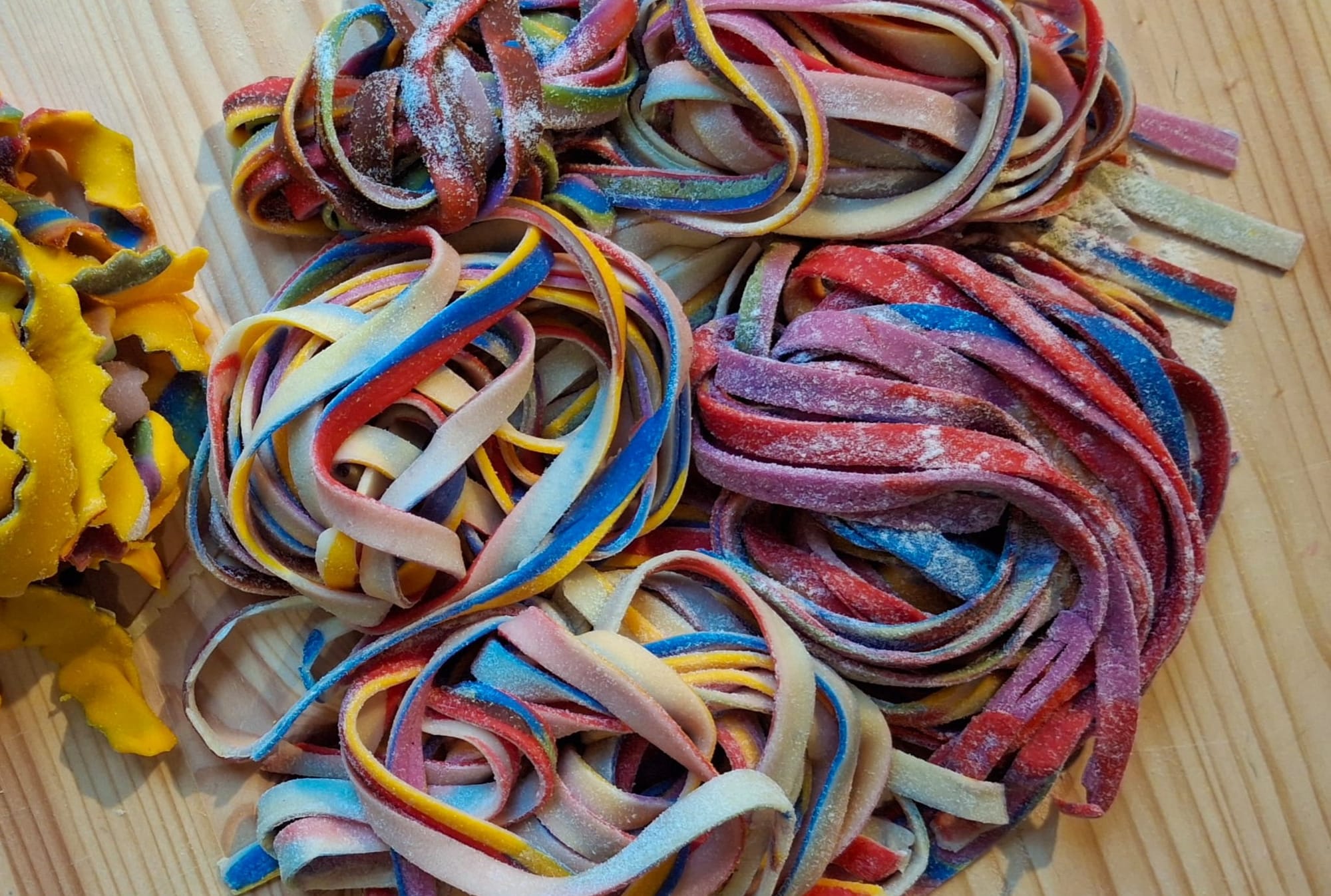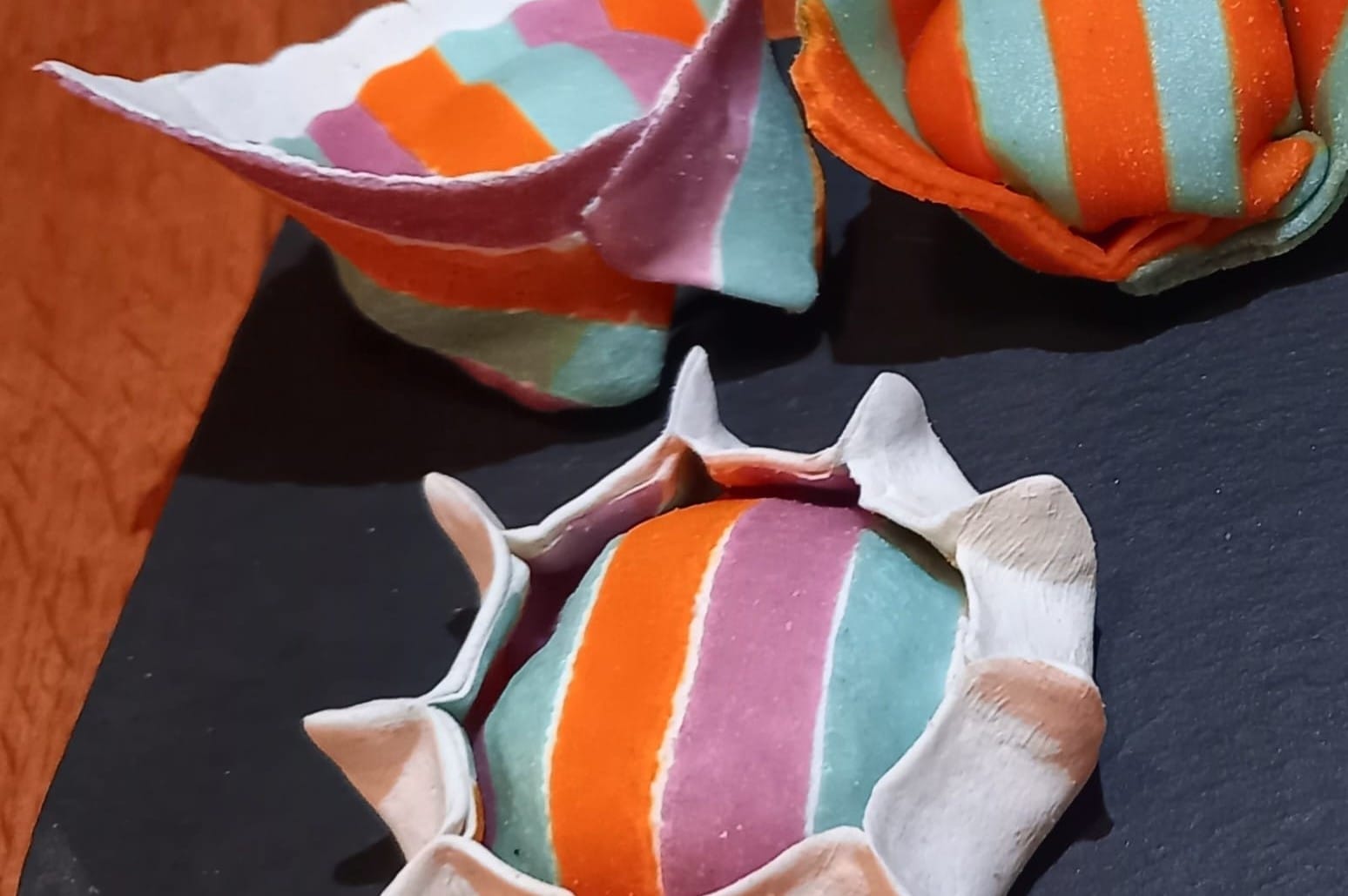Council pushes forward plan for 20 new artist studios and a revived theatre on Merchant’s Quay
If it gets planning permission for the €9.5 million project on schedule, construction could start next September, according to a council official.
The whimsical pastas from EGOpasta are bright and striped, spotted and swirled.

“We are daring to do that,” says Rocco Silvestro.
Earlier this month, the president of the Rome unit for the Italian restaurant association Fiepet Confesercenti wrote to the British Embassy there, over the ingredients listed on the Good Food website for a plate of cacio e pepe.
When food historian Alberto Grandi suggested spaghetti carbonara was originally made with bacon and powdered egg yolks, rather than pork jowl and pecorino, the backlash went viral.
Silvestro and his associate Tamara Barbato are both Italian but they have lived abroad for more than half of their lives, he said. “That’s why we dare.”
The twist that they are introducing to their Italian dishes isn’t a change in flavours or shapes.
There are hundreds of amazing pasta shapes after all, says Barbato, who used to own and run the Bell Pesto restaurant in the Liberties, and has spent time in Bologna, training in the practice and theory of pasta-making.
So, says Silvestro, their innovation is colours. The whimsical pastas they make at their start-up, EGOpasta, are bright and striped, spotted and swirled.
The idea, he says, is to offer artisan beautiful pastas with visual designs, treating the pasta like a textile. “On it, you can draw anything you like.”
He imagines one response: why would you do that?
“It’s something you don’t need. Which if you bring it to the core, it’s true,” he says. Pasta is all about the good flour, the good water, salt, oil, and good eggs, and craft, he says.
“But at the end of the day,” says Silvestro, “why not?”
Silvestro worked in hospitality for years, he said recently, sat at a table at the cafe outside the Chester Beatty museum in Dublin’s city centre.
These days, restaurants are staffed with young folks from all over the world, he says. And he realised, talking to them, that many had no equivalent memories of sitting around making pasta with friends or grandparents.
Something is missing, he says. “You need these memories. To build your own memories with your own family, one day.”
“So I thought, maybe, I can make people feel these feelings,” he says.
Come to one of their workshops and start to build your own memories, he says, or just buy some of their pasta and cook it at home. “And still say, wow, together.”
He expects one strand of their fledgling business to be selling pasta to restaurants, he says, or venues, or private chefs who are catering a wedding and want something different – like an entirely blue dinner.
For normal customers, EGOpasta wants to offer its own designs. But also to let customers commission: like red and yellow stripes, with a particular kind of filling. Which would be a bit more affordable “for a wider audience”, he says.
They have had warm-up events, he said. “The feedback was great.”
They ran one at Bell Pesto, the restaurant on James’s Street, hosting their own dinner.
The menu was all pasta dishes. Deep-fried pasta for a starter, and pasta skewers. Three mains: pappardelle with lamb ragu, venison ravioli, and duck ravioli.
For dessert, a small raviolo filled with chocolate and pistachios. “Everybody was like, can I get one more? Can I get one more?” he says.
The crowd got it, he says. “They could appreciate the fact that it is non-traditional, but at the same time, it maintains the taste of what you might, might remind you of Italy or an Italian product.”
It wasn’t cheap, he says, at €70 a head. But the pastas at EGOpasta are meant to be special, he says.

Silvestro and Barbato have been looking around for a commercial kitchen to ramp up properly, he says. That’s the next step.
But he has no intention of running a restaurant. He worked in hospitality for years and had to get out, he says. “It changed too much from the beginning to the end.”
Silvestro came to Ireland in 1998, he says. It was the beginning of the Celtic Tiger.
“The whole Celtic Tiger was just a ball,” he says. He knew, from Italy, that economies that go up also come down – and he made sure to enjoy the up time, he says. “I was young enough.”
He worked for Mick Wallace, the former restaurateur, developer and MEP, for seven years, he says. Later, he worked as a manager at Yamamori on South Great George’s Street, he says. He helped open its sister restaurants Izakaya and Tengu too which was incredible, he says. “I learnt how to do business.”
Back then, there was money to be made in hospitality and it was fun, he says.
With the crash, hospitality changed. The quality and innovation of what was on offer sank. “It was difficult to sell anything that wasn’t a scone, chicken sandwich, and coriander and carrot soup,” he says.
Squeezed customers seemed to take it out on staff, he says. What had seemed to be valued as a career no longer was, he says.
So, with EGOpasta, he and his associates would rather focus on the workshops, and selling the product for others to cook and enjoy, he says.
“This is something that came from us.” That’s why it’s called Ego, he says. “This is something that we want to do.” “This is us. This is me.”
Silvestro is careful to veer away from the word tradition, he says. “We don’t want to get into that.”
Grandi, the food historian and a professor of economics and management at the University of Parma, has his theories as to why many Italians are sensitive to what they see as gastronomic traditions and can be scathing of novelty.
“I believe that Italians, until 50 or 60 years ago, weren't very proud of their cuisine, which was, after all, very humble,” he said, by email. “So the concepts of authenticity and tradition, which did exist, weren't particularly important.”
The rebirth, or rather the invention, of Italy's gastronomic tradition is the result of Italy's identity crisis, following the end of the economic boom in the 1970s, he said.
The country moved fast from an agricultural economy to an industrial and now post-industrial system, he said. “From a period of overwhelming growth to a crisis that has now lasted 40 years.”
“And so we cling to cuisine as an element of identity, and tourism as a driving force. But both are illusions and shortcuts,” he said.
Barbato says she thinks that Dublin is a great place to be experimenting with this. People are open to trying new things, she says.
Silvestro says he isn’t about dictating and teaching anybody anything and food, he says. It’s just about having a good time, and enjoying it as you want, he says.
He may want to eat his pasta with butter and sage, others may want chunks of chicken, or parmesan and lobster. “You want chicken, do what you want.”
“The only law is what you like,” he says. “I like to apply that to me.”
